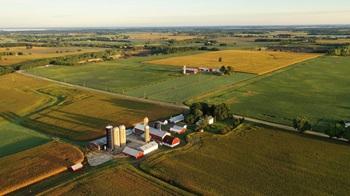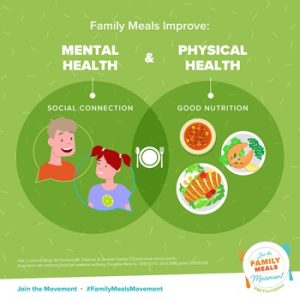<p><strong></strong>By Andy Harig, Vice President, Tax, Trade, Sustainability and Policy Development, FMI<br /></p><img src="https://www.fmi.org/images/default-source/blog-images/aerial_view_farm.tmb-large-350-.jpg?Culture=en&sfvrsn=1b3fda6_1" style="margin-bottom:10px;float:right;margin-left:10px;" alt="Aerial_View_Farm" sf-size="100" /><p>Despite steady improvement over the last year, U.S. inflation continues to be stubborn. While overall food inflation has stabilized, November Consumer Price Index (CPI) and Producer Price Index (PPI) data shows that a few specific food categories continue to pose challenges. <br /></p><p>At 1.6% year-over-year, food-at-home inflation continues to remain below the Fed’s overall 2% target, but – as we’ve <a href="https://www.fmi.org/newsroom/latest-news/view/2024/12/11/fmi-statement-on-november-cpi-food-price-numbers">noted</a> – the slight tick upward to 0.5% in the monthly food-at-home figure bears watching. Increases in the price of eggs (8.2%) − driven by avian influenza − and the price of beef (3.1%) − driven by high input costs and low cattle inventories − both point to obstacles the food and agriculture supply chain are working to overcome. <br /></p><p>These volatile input costs, which impact how much it costs farmers and food producers to make the food that winds up on grocery store shelves, are major contributors to the price shoppers pay at checkout. I recently spoke with Dr. Ricky Volpe, professor of agribusiness at Cal Poly, to talk about how the PPI provides insights into those shifting input costs, as well as what the latest data from November can tell us about what to expect for grocery prices in 2025.<br /></p><p><strong>Andy: Ricky, can you explain why it’s important to pay attention to the PPI?</strong><br /></p><p>Ricky: The PPI is an essential metric to watch because it measures the prices businesses pay for the goods and services required to make their products, which provides a behind-the-scenes look at the costs that go into producing the food that you purchase at the grocery store. Things like trucking rates and extreme weather significantly impact the cost of doing business, which in turn causes a ripple effect across the supply chain and plays a major role in determining what you pay for food at checkout. It is more forward-looking than the CPI, because it measures prices that are paid for goods and services before they end up on supermarket shelves. For example, the PPI for wheat is a good indicator of where retail prices for cereal and bakery products may be headed in the next few months. <br /></p><p>The PPI also goes a long way in debunking this notion that grocers were using inflation to inflate the price of food. As we talked about last summer, from spring of 2020 to summer of 2024, grocery prices were up 25.3%, while producer costs were up 28%, meaning that grocers and other businesses across the food supply chain were actually absorbing more costs than they were passing along to consumers and were likely seeing their operating margins shrink.<br /></p><p><strong>Andy: The November PPI numbers were higher than expected. Does that mean you expect to see higher grocery prices?</strong><br /></p><p>Ricky: Not necessarily. At first glance, if you average the year-over-year food commodity PPIs, you’d see an increase of 12.4%, which certainly seems concerning. But if you look more closely at the PPI data, that increase is largely driven by a few outliers − items like green peppers, lettuce, tomatoes, and egg − which are experiencing supply chain issues. It’s been well documented that between avian influenza and Hurricanes Milton and Helene, the egg industry has been severely disrupted, while the lettuce industry was similarly hurt by hurricanes and by the fungal disease fusarium wilt. These foods are also highly perishable and fragile, so they are likely affected by ongoing truck shortages to a greater extent than some other foods.<br /></p><p>When you remove those outlier categories, the year-over-year average for the 12-month food commodity PPI categories falls from 12.4% to just 3.9%. Ultimately, upstream commodity price movements are mixed, but I think shoppers can expect to see stabilization across most categories with some price increases for some of the specific products that I mentioned. <br /></p><p><strong>Andy: You’ve spoken a lot about the way particular foods/categories are driving the overall PPI. As we enter 2025, what foods are you keeping an eye on?</strong><br /></p><p>Ricky: One thing I’m keeping my eye on is a jump in the price of field corn. The one-month percentage change for field corn has generally declined in the PPI over the course of 2024, but in November it increased 10.7%. It’s not immediately clear if this is a one-month blip, or a reversal of the previous downward trend, so we’ll be watching the next few PPIs closely to glean more information. <br /><br />And you may be asking yourself, why is an increase in the cost to produce corn a big deal? The reason is that corn is king. Corn is used in everything from livestock feed – everything from chicken to cattle to hogs – and corn is also the primary sweetener in our food supply chain and the building block of so many shelf-stable foods. In short, when the cost to produce corn rises, it can cause the cost of many other foods to rise as well. Many CPI categories representing foods all across the supermarket are closely correlated with the price of corn.<br /></p><p>All that being said, it is also worth pointing out that while the PPI increased for corn in November, it still remains lower than it was this time last year. The 12-month percent change for corn on the November PPI decreased by 9.5%.<br /></p><p><strong>Andy: That makes sense. Media coverage of the November PPI has primarily placed the blame for the higher overall PPI on food prices. Does that tell the whole story?</strong><br /></p><p>Ricky: Food prices are one of the most volatile segments of the PPI because of their complex supply chain and the numerous factors that can disrupt it. These include areas we’ve already discussed like weather disruptions, diseases and other threats, truck transportation, as well as rising costs for labor and agricultural inputs such as fertilizer.<br /></p><p>While the few outlier foods were one factor that contributed to driving up the PPI, it’s also worth noting that this doesn’t mean that grocery prices are less affordable than other segments, just that the rate of their price increase was slightly higher than other industries in November. <br /></p><p>I think it is also important to note that eating at home remains the most affordable option for consumers. If we look at the Consumer Price Index over the last year, from November 2023 to November 2024, the price of groceries went up just 1.6% year-over-year, while the cost of dining out went up 3.6%. Food-away-from-home continues to outpace both the food-at-home and all-items CPIs, meaning that eating out is becoming more expensive in real terms. <br /></p><p>And this has also been the case historically. According to the USDA’s Economic Research Service, if we look at the last decade, from 2014 to 2024, overall inflation for all goods and services increased by 34.3% over that time. The cost of food-away-from-home, or dining/ordering out, increased by 49.5%. In that same time period, the price of groceries increased by 29.9%, which was less than average inflation overall, and 20 points less than the average cost to eat out or order in. <br /></p><p><strong>Andy: Thanks, Ricky. We’ll continue to monitor these changes closely. While it’s impossible to predict everything that will impact food prices in the coming year, we know that disruptions typically come from one of three areas: weather, labor, and transportation. Even amidst the vast upheaval these issues have caused in the past few years, a recent FMI report found that 85% of grocery shoppers say that they have at least some control over their grocery expenses. We remain confident that even as inflation remains stubborn, we are moving in the right direction.</strong></p>
[#item_full_content]




